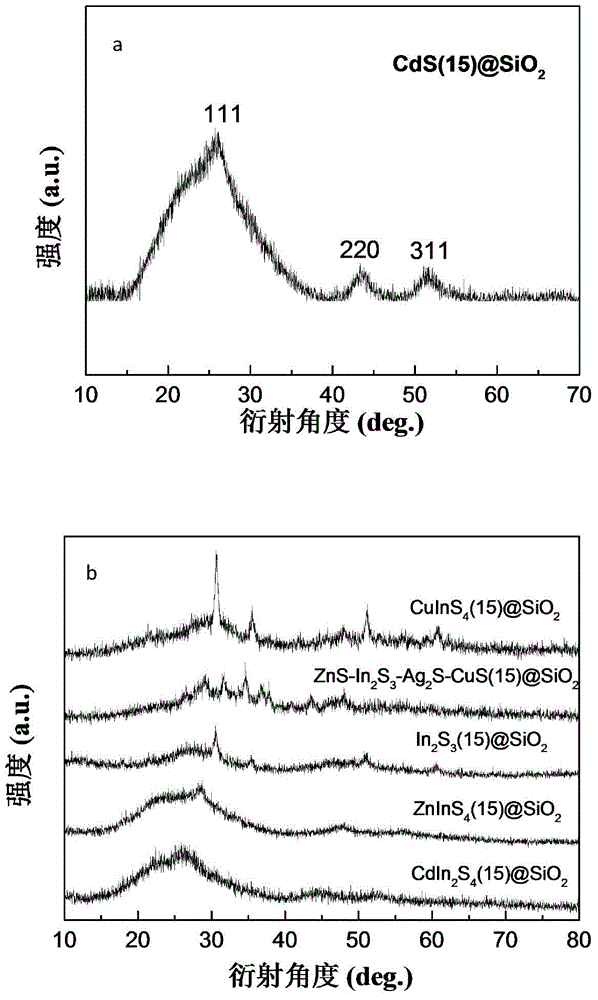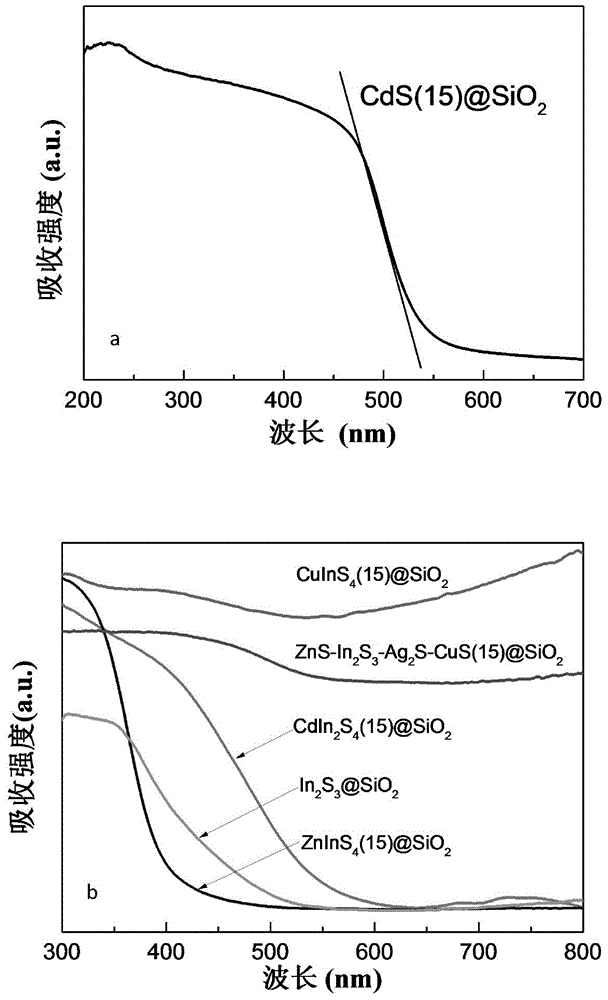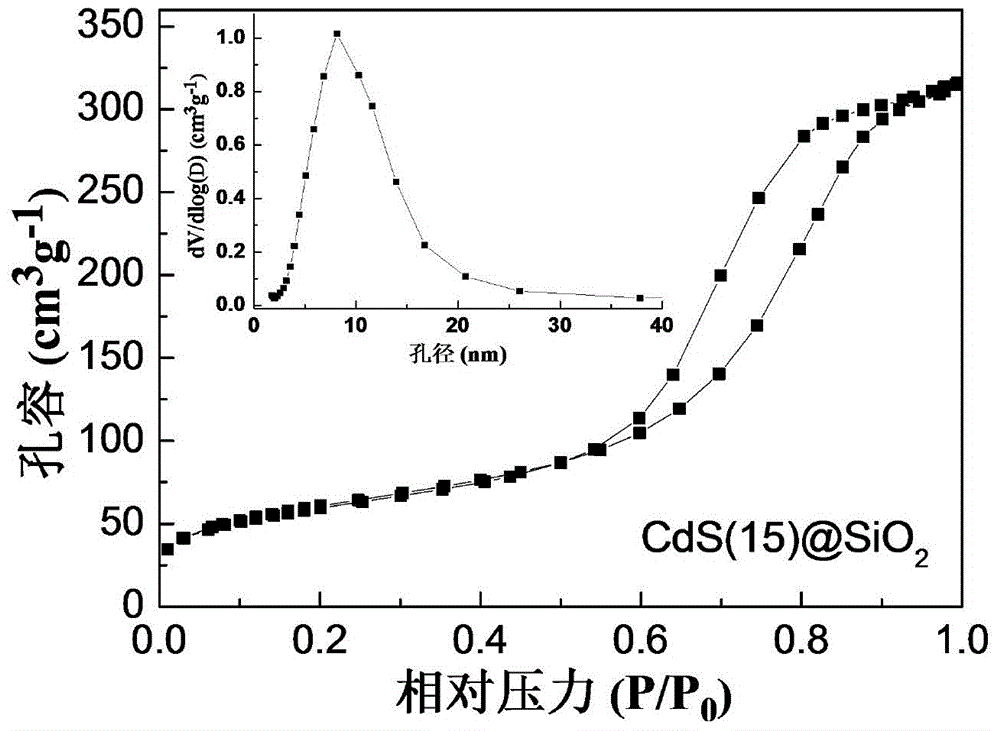Photocatalyst, preparation method thereof, and application of photocatalyst in preparation of hydrogen
A photocatalyst and catalyst technology, applied in chemical instruments and methods, physical/chemical process catalysts, hydrogen production, etc., can solve problems such as poor stability, high cost, and low catalyst efficiency, achieve high hydrogen production efficiency, and avoid synthesis Conditions, the effect of saving resources
- Summary
- Abstract
- Description
- Claims
- Application Information
AI Technical Summary
Problems solved by technology
Method used
Image
Examples
Embodiment 1
[0049] Example 1: Preparation of metal oxide loaded on silica composite by impregnation method, namely MO(x)SiO 2
[0050] Weigh 0.13g of cadmium nitrate and dissolve it in 20mL of water to make a solution; disperse 0.5g of non-soluble carrier silica gel in the above solution to make a suspension; stir the suspension obtained above for 4 hours at room temperature, then place Put it in a water bath at 80 degrees Celsius for 10 hours until the water is evaporated to dryness to obtain a massive solid; put the obtained solid in an air atmosphere and roast it at 600 degrees Celsius for 3 hours, and grind it into powder after cooling to obtain a metal oxide loaded on silica composite matter, namely MO(x)SiO 2 , the product mass was 4.89 g.
Embodiment 2-10
[0051] Example 2-10: Preparation of metal oxide loaded on silica composite by impregnation method, namely MO(x)SiO 2
[0052] Using the same preparation process as in Example 1, only changing the type and amount of metal inorganic salt, the type of insoluble carrier, the stirring time at room temperature, the temperature of the water bath, the time of the water bath, the roasting temperature and the time, and preparing the metal oxide supported on Silica composite, MO(x)SiO 2 , the parameters used are shown in Table 1 and Table 2.
[0053] Table 1: Reaction conditions and results of Examples 2-5
[0054]
[0055] Table 2: Reaction conditions and results of Examples 6-10
[0056]
[0057]
Embodiment 11
[0058] Example 11: Preparation of metal oxide-loaded silica composites by sol-gel method
[0059] (1) 4.3g organic molecule citric acid and 0.15g soluble metal inorganic salt cadmium nitrate are dissolved in 7.5mL water to obtain a solution;
[0060] (2) Quantitatively adding the soluble carrier precursor orthosilicate to the solution obtained in (1);
[0061] (3) Adjust the pH of the solution until the solution is hydrolyzed and solidified into a jelly-like shape, and placed in a water bath at 80 degrees Celsius for 10 hours until the water is evaporated to dryness to obtain a massive solid;
[0062] (4) The solid obtained in (3) is placed in an air atmosphere at 600 degrees Celsius and roasted for 3 hours, cooled and ground into powder to obtain cadmium oxide loaded on silicon dioxide, that is, CdO(1)SiO 2 ;
[0063] Using the same preparation process as in Example 11, only changing the type, amount, type of organic molecule, water bath temperature, water bath time, roasti...
PUM
 Login to View More
Login to View More Abstract
Description
Claims
Application Information
 Login to View More
Login to View More - R&D
- Intellectual Property
- Life Sciences
- Materials
- Tech Scout
- Unparalleled Data Quality
- Higher Quality Content
- 60% Fewer Hallucinations
Browse by: Latest US Patents, China's latest patents, Technical Efficacy Thesaurus, Application Domain, Technology Topic, Popular Technical Reports.
© 2025 PatSnap. All rights reserved.Legal|Privacy policy|Modern Slavery Act Transparency Statement|Sitemap|About US| Contact US: help@patsnap.com



